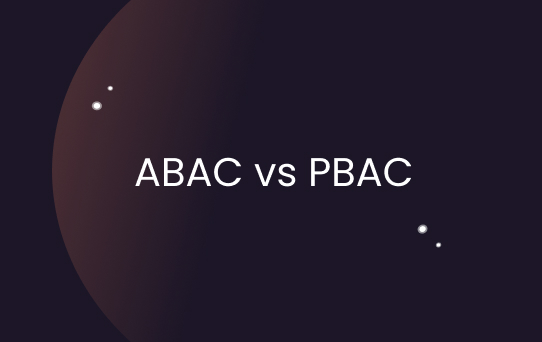ABAC vs PBAC
Attribute-Based Access Control (ABAC) and Policy-Based Access Control (PBAC) are modern methods of managing and controlling user access within an organization's network. As an evolution from the traditional role-based access control systems which have become inadequate in today's complex digital landscape, ABAC and PBAC have emerged to provide detailed and flexible access management strategies.
What is ABAC and PBAC?
Within the world of identity and access management, Attribute-Based Access Control (ABAC) operates on the principle of evaluating attributes of the user or object. Attributes may include user details like role, department, or location, and object details like file type or creator. Configuring specific conditions based on these attributes, ABAC enables dynamic access control decisions. On the other hand, Policy-Based Access Control (PBAC) works by implementing specific policies defining rulesets for user access. These can detail conditions under which access should be granted or denied, incorporating elements beyond user role to include attributes such as what action they are undertaking, when they are accessing, from where, and more.
Why ABAC and PBAC Exist and Who Needs Them?
ABAC and PBAC exist due to the modern necessity for granular access control that accurately reflects a user's need-to-know while upholding the principle of least privilege access. These methods can automatically adjust access rights based on changing circumstances such as job role changes, temporary assignments, or differing locations, enhancing cybersecurity significantly. They are crucial for organizations with large numbers of users, sophisticated data structures, regulatory compliance needs, or facing evolving cybersecurity threats.
How is ABAC and PBAC Used?
In practice, ABAC and PBAC are implemented through specific policies or attributes configured in a company’s Identity and Access Management (IAM) solution, where they work seamlessly together to control permissions. In a SaaS application, for example, ABAC can grant access to certain features based on user attributes (such as being part of a certain department). At the same time, PBAC can impose additional contextual conditions such as granting access only during specific times, or from specific locations.
How Common are ABAC and PBAC?
ABAC and PBAC are becoming increasingly common, especially among larger organizations and businesses in sectors with high regulatory compliance needs such as healthcare, banking, and government. Their importance lies in the fact that they improve cybersecurity by ensuring that users only access the data and systems they need to perform their jobs. This potentially minimizes the damage cyber criminals can inflict because even if they compromise a user's account, they can only gain access to a limited set of resources.








